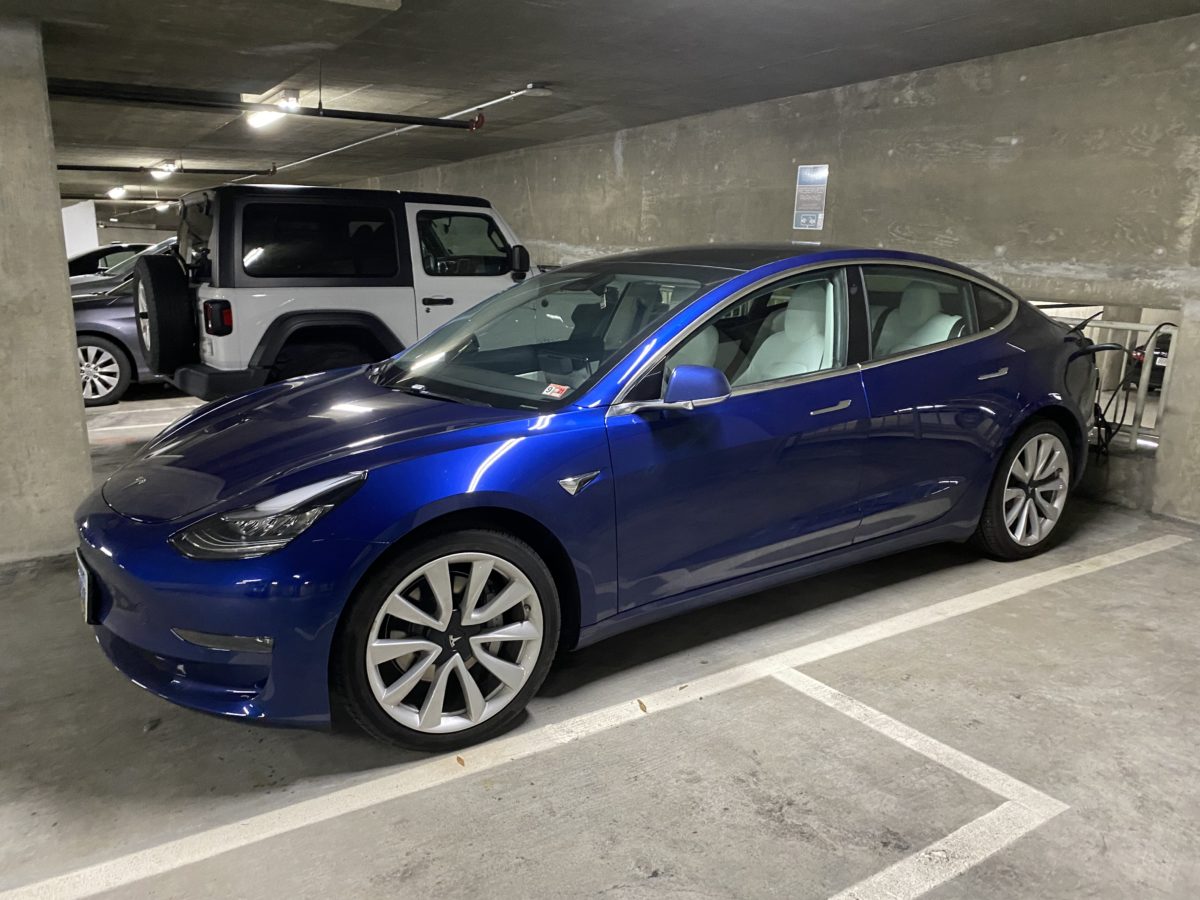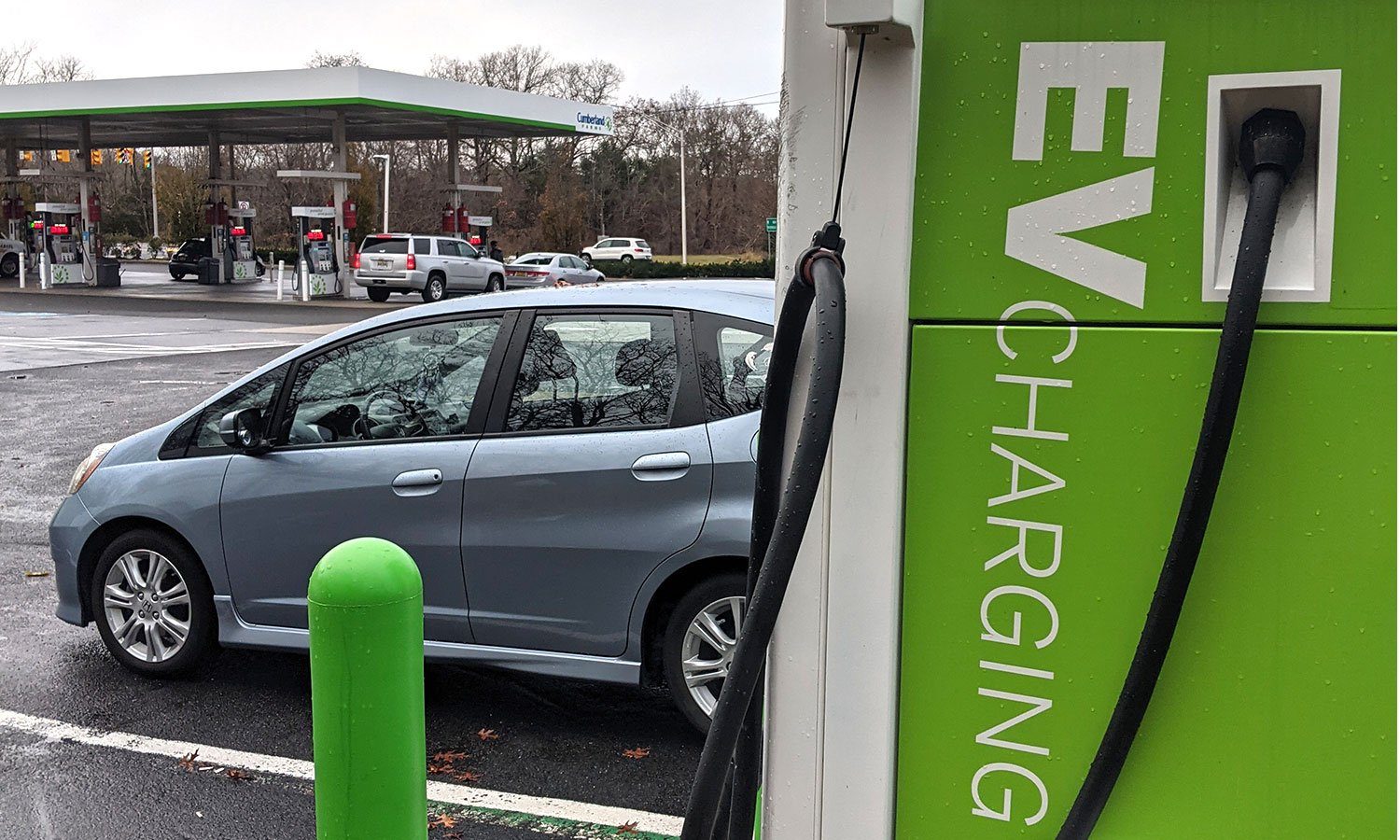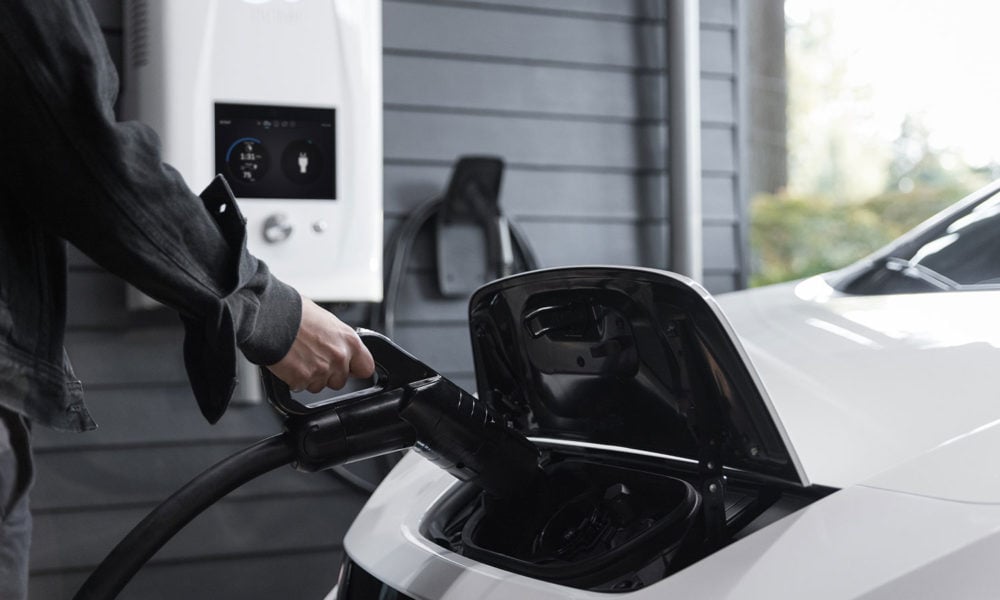If you’re in the market for an electric car, then you are probably also in the market for an electric car charger. A major part of your electric car-buying research is figuring out what your refueling (which is to say charging) routine will be. With the ability to charge at home, at work, and in public places, electric cars have changed the car refueling paradigm completely for the better.
Imagine: soon, you can break free of the cycle where you take a trip to the gas station just to get gasoline, then run your fuel tank down to when the light comes on (or perhaps so low that the needle on the gauge is invisible), then take another special trip to the gas station to get gasoline again, and so on.
(I’ll be saying “electric car” throughout, but we’re starting to see electric SUV and truck models come to market—so all this applies to drivers who need utility vehicles, too!)
1. Where will I charge my electric car or truck?
Everyone’s personal mobility needs are unique. Not everyone needs or can afford a car in the first place. Maybe the people’s electric vehicle (i.e., an electric bus) is the one for you!
If you do need a car, first, determine whether you would get your usual charge at home, away from home, or a combination of both. To determine your day-to-day charging, you need to think about your day-to-day driving. Most people drive less than 40 miles per day, so charging the car when it is going to be parked for long periods of time (like at your home) is more than sufficient to fill up for day-to-day driving—even at low power.
If you have an older electric car or a plug-in hybrid with a more modest electric range, or if you drive a lot of miles per day, then you may need to compliment your home charging with some charging away from home. Is there a charger at your workplace, at the supermarket where you do your weekly shopping, or in the parking lot where you wait during your kid’s music lessons? Those types of places will be good charging options for you. Similarly, if you don’t have access to charging at home at all, you will need to take inventory of what charging is available to you in your neighborhood or at places you regularly go on a daily, weekly, or even monthly basis to establish all your options.
2. What kind of electric car charger will I need?
The different levels of charging are kind of like having the option of local roads, highway, or an express toll lane to get to your destination. You can pay a little more to get where you’re going a little faster.
The most basic way to charge an electric car is to plug the power cord that comes with the vehicle into a regular, three-prong 120V wall power outlet. That’ll charge your car at Level 1. It’s like taking local roads on the scenic route.
In all likelihood, you will not require electrical upgrades at your home if you opt to choose to charge at Level 1 because the car will pull power no faster than other devices that are plugged into your walls. On the other hand, charging at Level 1 could take a while, even overnight, depending on how depleted your battery is.
Level 2 charging provides more power, using the same kind of plug used for a clothes dryer. Many people prefer to have a Level 2 charger installed in their garage or on the side of their house to have the ability to charge more quickly or to have more flexibility in what times they charge (more on that in terms of charging costs below). In a survey among electric car drivers in California, the convenience of having home charging has been shown to strongly affect a driver’s experience owning an electric car. Drivers with home charging, particularly Level 2 charging, were much more likely to stick to an electric model when the time came to replace the current electric car. You may need either a residential or commercial Level 2 charger model, depending on whether you’re in a single family or small multi-unit building or a larger building.
The fastest chargers available are direct current (DC) fast chargers, and those aren’t really a home charging option. That’s because there typically is no need to charge at DC fast speeds at home that would justify the thousands of dollars more it costs to install charging infrastructure with such large capacity. However, there could be the occasional situation where an apartment or condo building offers access to one or more shared DC fast chargers for many, many vehicles as a community resource. In that case, use of that charger would be more analogous to use of a public charging station (more on that below).
3. How fast will my car charge?
How long it takes to charge at Level 1, 2, or DC fast depends on how big the battery is, how much “fuel” in kilowatt hours (kWh) you need, and the power rating of the charger.
Let’s say you’re looking at an electric car of pretty average efficiency—such as a Ford Mustang Mach-E, Volkswagen ID.4, or Tesla Model S—that takes about 34 kWh to drive 100 miles. Imagine your typical daily driving is 25 miles, and you want to start each day with your car battery at 100 percent. You could recharge the battery in 4.5 hours with a Level 1 charger or a little more than an hour with a residential Level 2 charger. If your daily driving is much farther than 25 miles or you have less time to charge, it may be helpful to opt for Level 2 charging at home.
4. Can I get a Level 2 charger at home?
If you’ve decided you want something faster than a Level 1 charger at home, you may need to involve your electric utility to confirm whether an upgraded electric service or second service line (or no upgrade) is your best way to set up charging for your home. Plus, your utility may offer financial support for installing the charging infrastructure—from the “make ready” trenching, conduit, and wires up to the charger itself. In addition to utility incentives for installation of a charger, look for state or regional agencies in your area that sometimes offer help with charging costs. For example, the South Coast Air Quality Management District in California offers rebates for chargers.
You should also check to see if you are able to claim a federal tax credit for alternative fuel infrastructure. This tax credit (30C) has been through a couple of cycles of expiration and extension. UCS is currently working to have this credit extended. With any luck, by the time you’re in the market for electric car charging, this credit will be available to you.
5. Is charging my car at home going drive up my electric bill?
Often the most convenient, lowest-cost part of an EV fueling routine is home charging—if that option is feasible given your housing situation. While your electric bill will likely go up when you start charging an electric car at home, your total energy costs will go down because you will cut your gasoline expenses. Indeed, fuel cost savings are a key benefit of switching to an electric car, and you can take steps to maximize those savings. You may be eligible to enroll in a smart charging (aka load management) program with your electric utility or a third party provider. For example, you may be able to sign up for a time-varying electricity rate (for your car charging or your whole house, depending on what is available and what is best for you). Under time-varying rates, your electricity rates at off-peak or super-off-peak times of day (like the middle of the night) can be very low, and doing most of your charging during those hours can save you a lot of money over time.
There may also be other variations of smart charging programs available to you, such as demand response programs in which the utility or a third party provider rewards you for modifying your charging habits when the utility needs you to do so (like, during a heat wave when the electric grid is stressed.) More sophisticated vehicle-grid integration programs are popping up, too. We are even seeing some pilot programs for vehicle-to-grid power export. Be sure to ask your utility about all the options they have for you and any third-party programs in the service area that will enable you to lower your fuel costs and benefit the grid!
6. I’m a renter or a condo owner, and I want an electric vehicle. Now what?
Renters and residents of apartment and condominiums are sometimes out of luck when it comes to at-home charging, but there is a growing number of multi-unit dwelling buildings, especially in larger cities, that are providing parking spots with access to a vehicle charger, or the ability to have one installed. For example, the homeowner’s association for my sister’s condo building in San Diego recently adopted a policy that clearly spells out the process and responsibilities for unit owners who install EV charging.
Even at apartment or condo buildings without dedicated chargers, you may be able to plug into a regular wall outlet if you park in a garage equipped with those. My neighbor does this in our large underground parking garage in Arlington, VA pictured here.

Look into your at-home options, even if you rent or live in a multi-unit building! Your landlord or homeowners’ association needs to know there’s demand for charging before it will invest (or let you invest) in it.
You could also investigate plug-in hybrids, which offer you the option of plugging in when you find public charging, as well as a conventional backup gas tank.
8. How do I charge my car on a road trip?
Charging along travel corridors has come a long way, and I’m not just talking about the Tesla charging network. Electrify America, for example, has opened an average of four stations every week since 2018, mainly along interstate highways. Upcoming charging investments, including federal charging programs in the 2021 Bipartisan Infrastructure Law, will improve the existing charging on travel corridors.
It’s quite possible that charging stations may be already in place on the road trip routes you plan to take. For people in the market for a new (or new-to-them) electric car, I recommend mapping out longer trips they think they are likely to take to confirm charging availability, given the electric car’s particular battery range. Some automakers have tools to automatically calculate such a route. You can also use a resource such as PlugShare to identify charging locations, power level, port type, and cost.
As with day-to-day charging, the time it takes to charge on your road trip pit stop depends on how many kilowatt hours (kWh) you need and the power rating of the charger. Imagine, for example, you want to add 150 miles of range when your battery is getting low. If you only have access to a Level 2 charger, it could take anywhere from 3 to 7 hours to charge, depending on the charger’s power output. But with a 50 kW DC fast charger it would take about an hour, and if you had access to a 150 kW charger it would take only about 20 minutes.
So you’ll want to match the kind of stop you want to take with the charging that is available. Are you stopping at an attraction like a museum, national park, or hotel where you will spend many hours? Are you stopping just to fuel, grab a meal, stretch your legs, and, dare I say, check your email? You may want to look for a faster DC charging station like the one at the travel plaza on Long Island, NY pictured below.

What should I do if an electric vehicle is out of the question for me right now?
- Consider an electric bike if you need a little more zoom than a regular bike or you’d like to arrive at your destination feeling a little cooler and more put together. There are even cargo e-bike options these days, and some utilities offer a rebate for e-bikes.
- Support expanded mobility options including bike lanes, expanded and electrified public transit, safe walking routes, and electrification of ride-hailing whenever your local city council or planning commission is considering these changes to your community.
- Express support for expanded charging options to your electric utility, city government, and state and federal policymakers.
- Call on the automakers to bring more vehicle types to market.
A technical note on chargers
While this blog post has referred to “chargers” in a colloquial sense, I’ll note that, technically speaking, the charger when charging on AC power is actually on-board the vehicle. The equipment used to feed AC electricity to the vehicle is technically electric vehicle service (or supply) equipment, or EVSE for short. So now you can translate if you see that terminology used in a charging program description or elsewhere.

